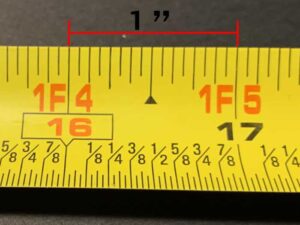As the question of how long does a mattress last takes center stage, this opening passage beckons readers into a world crafted with expertise, ensuring a reading experience that is both absorbing and distinctly original. Delving into the intricacies of mattress longevity, we will explore the factors that influence its lifespan, the telltale signs of deterioration, and practical tips for extending its use.
Get ready to discover the secrets to a good night’s sleep, starting with the mattress that supports you.
Factors Affecting Mattress Lifespan
The lifespan of a mattress is influenced by various factors, including its type, usage patterns, and environmental conditions. Understanding these factors can help you make informed decisions to prolong the longevity of your mattress.
Mattress Type
Different mattress types have varying durability characteristics:
- Memory Foam:Known for conforming to body contours, memory foam mattresses tend to have a shorter lifespan due to the material’s susceptibility to indentations and loss of support over time.
- Latex:Natural or synthetic latex mattresses are highly durable and resistant to sagging, offering a longer lifespan compared to memory foam.
- Innerspring:Traditional innerspring mattresses have a moderate lifespan, with the quality of the coils and construction determining their durability.
Sleeping Habits
Your sleeping habits can also impact mattress lifespan:
- Weight:Heavier individuals tend to put more stress on a mattress, leading to faster wear and tear.
- Sleep Position:Side sleepers may experience uneven wear on the mattress due to the pressure concentrated on the shoulders and hips.
Environmental Conditions, How long does a mattress last
Environmental factors can affect mattress durability as well:
- Humidity:High humidity levels can lead to mold and mildew growth, which can damage the mattress.
- Temperature:Extreme temperatures can cause the mattress materials to break down prematurely.
Average Mattress Lifespan

The lifespan of a mattress can vary depending on several factors, including the type of mattress, the materials used, and the care and maintenance it receives. On average, most mattresses have a lifespan of 7 to 10 years.
Different types of mattresses have varying lifespans due to their unique construction and materials. Here is a table summarizing the average lifespan, durability factors, and maintenance tips for different mattress types:
| Mattress Type | Average Lifespan | Durability Factors | Maintenance Tips |
|---|---|---|---|
| Innerspring Mattress | 7-8 years | Coil gauge, coil count, and edge support | Regular flipping and rotating, use of a mattress protector |
| Memory Foam Mattress | 8-10 years | Foam density, thickness, and temperature sensitivity | Avoid direct sunlight, use a mattress topper for added comfort |
| Latex Mattress | 10-12 years | Latex quality, thickness, and density | Periodic airing, vacuuming to remove dust and allergens |
| Hybrid Mattress | 8-10 years | Combination of innerspring and foam layers | Regular flipping and rotating, use of a mattress pad for added support |
Signs of Mattress Deterioration: How Long Does A Mattress Last
As a mattress ages, it inevitably shows signs of wear and tear that indicate the need for replacement. These signs can manifest in various ways, affecting comfort, support, and appearance.
Changes in comfort often include increased sagging, reduced support, and a lumpy or uneven surface. As the mattress loses its ability to distribute weight evenly, pressure points may develop, leading to discomfort and aches.
Appearance Changes
- Visible sagging or indentations, especially in areas where weight is frequently applied.
- Fading or discoloration of the fabric, indicating exposure to sunlight or body oils.
- Stains or spills that cannot be removed through regular cleaning.
Comfort and Support Changes
- Increased sagging or loss of support, making it difficult to find a comfortable sleeping position.
- Development of pressure points, causing discomfort and aches.
- Reduced motion isolation, resulting in disturbances from a partner’s movements.
Other Warning Signs
- Unusual noises, such as squeaking or creaking, when getting in or out of bed.
- Allergic reactions or respiratory issues, potentially caused by dust mites or mold buildup.
- Persistent odors that cannot be eliminated through airing or cleaning.
If you experience any of these signs, it’s advisable to have your mattress professionally inspected or consider replacing it to ensure optimal sleep quality and health.
Extending Mattress Lifespan
Prolonging the lifespan of your mattress is crucial for ensuring a comfortable and supportive sleep experience. Here are some practical tips and recommendations to help you achieve this:
Mattress protectors and toppers play a significant role in extending mattress life. Mattress protectors safeguard against spills, stains, and allergens, while toppers provide additional comfort and support.
Proper Cleaning and Maintenance Techniques
Regular cleaning and maintenance are essential for maintaining the hygiene and longevity of your mattress. Vacuuming the mattress surface periodically removes dust and debris. For deeper cleaning, use a mattress cleaner or consult a professional cleaning service.
Rotating your mattress every 3-6 months helps distribute wear and tear evenly, preventing sagging and extending its lifespan. Additionally, flipping the mattress (if possible) ensures both sides receive equal use.
Avoid jumping or standing on the mattress, as this can damage the internal structure. When lifting the mattress, use proper lifting techniques to prevent back injuries and mattress damage.
Mattress Disposal and Recycling
Disposing of a mattress responsibly is crucial for environmental preservation and personal well-being. Improper disposal methods can lead to pollution and health hazards. This section provides guidance on mattress disposal and recycling, highlighting the importance of eco-friendly practices.
Numerous organizations and programs offer mattress recycling services. These entities collaborate with local waste management facilities to ensure proper disposal and recycling of used mattresses. By utilizing these services, individuals can contribute to environmental sustainability and reduce the burden on landfills.
Steps for Responsible Mattress Disposal
- Check Local Regulations:Familiarize yourself with local regulations regarding mattress disposal. Some municipalities have specific guidelines for discarding large items like mattresses.
- Contact Waste Management Services:Reach out to your local waste management company to inquire about mattress disposal options. They may offer curbside pickup or drop-off locations.
- Explore Recycling Programs:Investigate mattress recycling programs in your area. Many organizations and charities accept used mattresses for recycling and reuse.
- Consider Donation:If the mattress is still in good condition, consider donating it to a local charity or homeless shelter. This extends its lifespan and benefits those in need.
- Disassemble and Dispose:If recycling or donation is not feasible, disassemble the mattress and dispose of the components separately. Metal springs can be recycled as scrap metal, while fabric and padding can be disposed of in landfills.
Closing Notes
In conclusion, the lifespan of a mattress is a delicate balance of factors, from its type and usage to environmental conditions and proper care. By understanding these elements, we can make informed decisions to extend the life of our mattresses, ensuring a comfortable and restful sleep for years to come.
Remember, a well-maintained mattress is an investment in our health and well-being, providing the foundation for a good night’s sleep and a refreshed tomorrow.
Clarifying Questions
How often should I replace my mattress?
The average lifespan of a mattress is 7-10 years. However, factors such as type, usage, and care can influence its longevity.
What are the signs that my mattress needs to be replaced?
Signs of mattress deterioration include sagging, lumps, reduced support, and discomfort while sleeping.
How can I extend the lifespan of my mattress?
Use a mattress protector, rotate it regularly, and clean it according to the manufacturer’s instructions.





Leave a Comment